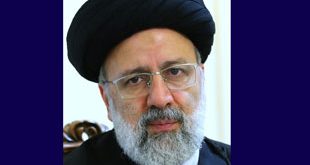
By Agnes E. Nantaba
Owners face tough choice on whether to expand at same location or start new campuses
School administrators in Uganda; be they private owners or the government, are starting to confront a problem they have avoided for some time; the need for more classrooms. Since the introduction of UPE in 1997, many more children are enrolling in Uganda schools. For decades now, classes have generally progressively become bigger, with more than 70 children and more each. But it appears, a tipping point has been reached. One survey in primary schools in Kampala found that up to 63% had between 50-70 children per class, while 29% had between 70-100 children per class.
As the numbers swell, the question is whether to squeeze the new classroom blocks into spaces at existing schools or to build new schools all together.
If new school campuses are built, is it better for them to have the same name, and therefore brand, as the old school or to forge their own identity under a new name? And the final, overarching question; what is the best strategy for ensuring standards of the school? Gayaza Junior School; one of Uganda’s premier elementary or primary schools, has faced this issue for some time. Located over 20kms northeast of Kampala city, it is a very old founded by missionaries from the Church Missionary Society of England in 1905 as Gayaza High School. It opened with just four pupils but today has about 1000 pupils. To cater for the growing numbers, the school has been building new blocks almost nonstop for decades.

The expansion started in 1962 when the present secondary section; called Gayaza High School, was set apart from it. At the time, Gayaza Junior School had eight classrooms. It lost four of them to GHS. But by April 30, 2006, as part of events to mark its centenary celebrations, the school was opening a new multimillion shilling complex; the Nnabagereka dormitory to accommodate more girls. Everything has been happening at its ancient campus. But that might soon change. The school is building a new campus at Kasanje in the same Wakiso district.
The school’s management committee chairman, Rev. Can. Augustine Magala Musiwuufu, says the new school is to be called Gayaza Junior School –Kasanje Campus. He said the old school has run out of expansion space and they did not want to demolish its old historical buildings. Already, some schools have met great success with this strategy of horizontal expansion.
Chasing money not service
Fagil Mandy, an education expert who is a former board chairman of the Uganda National Examination Board, is familiar with the challenges of school expansion.
He says outward expansion across multiple campuses is good as more students in diverse locations are able to access the same quality education from the same brand due to the proliferation of more branches. But he worries that the decision by the managers and owners of expanding schools to open more than one branch is largely based on commercial rather than social service interests. Previously, the phenomenon of outward expansion was only seen in private schools.
Private school chains like the St. Lawrence Schools and Colleges, Victorious Education Services, Sir Apollo Kaggwa, Taibah and Seeta High Schools are among the pioneers of outward school expansion in the country. But the traditional and government aided schools have recently taken on the idea as the struggle to accommodate the growing number of parents who are attached to their particular name.
Some of them like Namilyango Junior School; which is also one of Uganda’s historical government-owned schools, also opened another campus but under a different name; Mother Kevin Primary School in Nsambya. Among the private schools; in 1993, Prof. Lawrence Mukiibi started off the St. Lawrence chain of schools with the pioneer St. Lawrence School at Kabaka’s Lake Campus in Rubaga; a suburb of Kampala. With the surging numbers, Mukiibi opened another campus, Creamland along Masaka road in 1997. Two years later, a purely girls campus, Horizon, was born. The empire further expanded with London College opening in 2002, and Paris Palais in 2005. In 2007, Kabaka’s Lake Campus was shifted to Buddo along Masaka road to pave way for St. Lawrence University. It was renamed Crown City Campus. The last on the chain is the primary school called the Academy of St. Lawrence. With over 6,000 students, the St. Lawrence schools, colleges and academy are possibly the largest chain of schools in Uganda under the same brand.
The Naalya chain of schools is another of this kind of expansion. The school opened its doors in 1996 with one branch in Namugongo. However, with the growing demand, the school opened a second campus in Bweyogerere in 2004, and another Lugazi.
There are a lot more schools opting for the outward expansion. Some of them have branched out from lower to higher levels. Founded in 1999 as a kindergarten, Victorious Education Services has grown to add two other kindergartens and two primary schools under its chain. The Sir Apollo Kaggwa chain has grown from one primary school along Sir Apollo Kaggwa Road in Kampala, to include Mengo, Nakasero, and Kawempe campus. The Taibah chain has three campuses.
Maintaining standards
The Minister of State for Primary Education, John Chrysostom Muyingo, owns a chain of schools under the Seeta High Schools name. He says there are potential challenges related to schools expanding through opening new campuses.
“There is need to maintain focus on the original campus while devoting resources to the other in the pipeline,” he says. He says the expanding school needs to ensure that resources like furniture and manpower are adequate and up to standard.
Muyingo, who has three secondary school campuses, a primary and kindergarten under the Seeta High brand, admits that the outward expansion is challenging. But, he never compromises on quality. He says successful expansion is realised after establishing quality control measures at all campuses to make sure the brand is not diluted in any way and that students at all campuses are getting the same service.
But Fagil Mandy says it is easy to make pledges to maintain same quality of service across campuses but complex to attain. He says such expansion requires a model which can retain enough of the main institutional brand to look prestigious to all shareholders and remain yet properly tailored to suit realities in the changing education sector.
Mandy says because of the complex dynamics involved, he would opt for a vertical expansion or working within the already established campus. This vertical expansion could include expanding upwards; for instance from one to a multi-storey classroom building structure. This would also mean that the expanding school gets more working space, furniture, library space, storage spaces, sanitation facilities, water supply, and instructional. Mandy favours this approach as it consolidates the management and supervisory assets the made the school successful. On the other hand, opening new campuses means getting new managers, teachers, and support staff who might not execute the mission and objectives of the old school. “The brand name may have been built on the efforts of a hardworking head teacher or committed staff which is hard to source equally good staff to have a similarly good service at other campuses,” Mandy notes. He adds: “Competing amid a more cluttered field of players some of high quality and some less scrupulous and distinguishing the brand to students and parents potentially overwhelmed with so many choices is a hard note to pitch.”
Business managers have for long recognised the challenges of managing multiple business locations.
One such manager, Eric Bloom, who is the President of the American management-training firm; Manager Mechanics, has noted this points. “No matter how widespread your organisation becomes, you need to work hard to retain team cohesion and the philosophy that everyone is on the same team regardless of where they work,” he says.
With multiple campuses under the same brand name, basic operations, processes, logistics, communication, supervision, and teamwork become difficult to ensure.
Prof. Mukiibi attempts to maintain consistence of standards by keeping a close relationship with all the campuses. He ensures that he addressing assemblies on a weekly basis at each campus. He also focuses on careful planning before opening a new campus. “If you don’t have a groundswell of support from parents and the community, it won’t go well. We spend a year on planning to make sure that’s all in place before a new school opens.” Barbra Buyondo Ofwono the founder of Victorious Education Services says it is crucial to focus on quality assurance and ride on the founding virtues of the mother campus through recruiting the right people, establishing and maintain standards to make the expansion worth.
She however admits that such expansion comes with managerial challenges in terms of getting the right personnel who can share in the vision of expansion as well financial challenges as it takes long to pay off.
According to required government standards, each school must have an independent Board of Governors approved by the ministry, land, standard infrastructure such as classrooms, library, playground, skilled human resource and a curriculum that is in line with the Ministry.
Dr. Livingstone Ddungu, the director of Naalya Schools understands these challenges. “Yes, we are forward-looking, yet we enjoy a proud history and retain traditional values,” he says. He says even after expanding across several campuses, they have maintained a consistent balance between offering high academic success and offering equal opportunity for every pupil regardless of the campus.
Disparity in results
Although performance in national examinations may not be an adequate measure of the success of the Naalya chain of schools, they show obvious disparities. For instance the 2013 UACE Statistics from the school indicate that Namugongo campus emerged with seven students scoring the top 20 points, the Bweyogerere campus had a higher figure with nine students scoring 20 points, while the newest Lugazi campus did not get any student with 20 points.
The Sir Apollo Kaggwa schools fared better in the Primary Leaving Examinations (PLE) with ranked Sir Apollo Kaggwa Nakasero and Mengo the highest performing campuses with over 95% of the students passing in Division One. The other campuses had slightly lower performance.
The disparity in results is a clear indicator of the managerial and supervisory challenges associated with multiple school campuses, says Tonny Mukasa Lusamba, the assistant commissioner for primary education at the Ministry of Education and Sports. He says high grades are a result of efforts by the school management, staff, students, and other stakeholders. That cannot be standardised across school campuses. He says absence of quality assurance is a big challenge for expanding schools.
“Parents can only build trust in the campus after ascertaining that it produces quality. This is added to the facilities at the different campuses and the staff,” he says. All these requirements are easier to ensure if a school expands at the same campus.
 The Independent Uganda: You get the Truth we Pay the Price
The Independent Uganda: You get the Truth we Pay the Price


